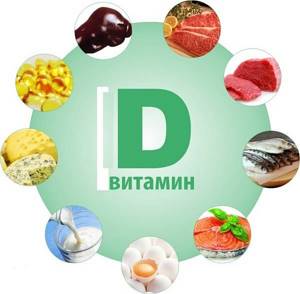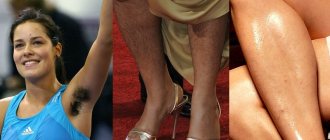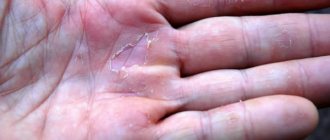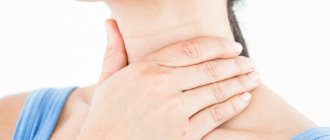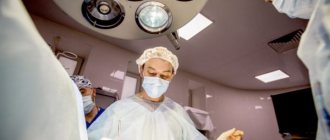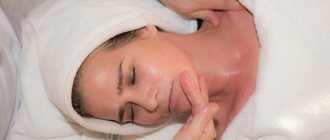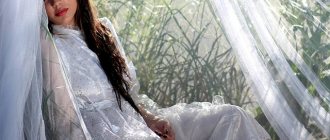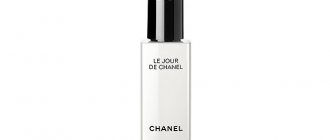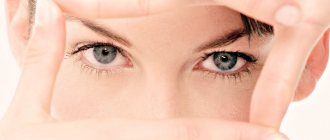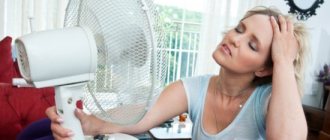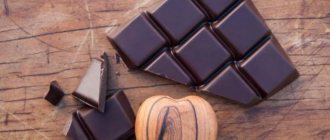Small pimples on the legs can appear in women or men of any age. It is especially common among young children, and this causes concern among parents. Rashes can indeed be an early symptom of a serious illness, so they should not be ignored. In this article you will find the most common causes of acne on the legs, relevant for adults and children. Here are the types of rashes and what each one may indicate. Ways to get rid of the problem are given; treatment depends on the root cause and the provoking factor.
The most common external causes include weather conditions. The body reacts sensitively to changes in temperature and humidity. In cool and humid weather, people get sprayed much more often. In children, the rash may be related to overheating, when sweating increases but there is not enough air exchange to evaporate the sweat. Clogged pores lead to an inflammatory reaction. The reasons may vary.
How to get rid of acne on legs
The rash most often affects the face, shoulders and chest area, but this does not mean that acne on the legs is very rare. On the contrary, during certain periods of the year this problem becomes worse.
All ages are subject to it, only women have to constantly wear trousers or long skirts that cover their legs because of acne.
In addition to taking care of camouflage, you need to think about the reasons and try to get rid of the annoying rash.
Hormones
In adolescence, during the menstrual cycle, during pregnancy, and stress, the endocrine glands create a “hormonal storm” for the body. The skin reacts to these changes - comedones, oily sheen, and pimples appear. The fact is that the influence of steroid hormones increases, causing active work of the sebaceous glands and increasing the viscosity of sebum.
The pilosebaceous ducts are blocked by plugs of dead cells and oily substances.
It is at this moment that you need to worry about how to get rid of acne on your legs - to prevent their occurrence with the help of proper care and a balanced diet.
Bacteria that parasitize the sebaceous glands play a major role in the appearance of acne. Therefore, preference should be given to products with antibacterial and anti-inflammatory properties.
Allergic reactions
The legs “get” less cosmetics, but the lower extremities are more often than other parts of the body treated for bruises, sprains, swelling and varicose veins. Various care and therapeutic products - lotions, soaps, scrubs, gels, ointments and creams - may contain allergens. The skin's reaction to each of the numerous ingredients in modern cosmetics is unpredictable.
If the rash is associated with hypersensitivity to certain substances, then special medical tests will help determine the allergen.
In case of hypersensitivity to food or medications, a small rash, redness, and swelling appears. Treatment of acne on the legs in women should begin by contacting a doctor - a dermatologist, allergist, endocrinologist. To alleviate the condition, the specialist prescribes antihistamines and enterosorbents orally, and ointments for external use.
Epilation
Not only women, but also men remove leg hair. Any type of hair removal is stressful for the skin and hair follicles. One of the reasons why acne appears on the legs is the ingrowth of new hair under the skin. A red pimple with a white tip appears at this location
Epilation should always be carried out with great care, taking care to disinfect and soften the skin
Violation of the protective functions of the skin
Every season becomes a test for women's legs, especially winter and summer. Warm clothing creates conditions for the accumulation of sebum and dead cells in the pores. The sebaceous glands become inflamed, and hypothermia can cause not only acne, but also nodules and cysts.
Common causes of acne on the legs in men are also associated with wearing clothes made from fabrics that irritate the skin. In summer, the temperature increases, increasing sweating, and there is more dust, dirt and germs.
All this creates problems for the skin of the legs, especially with regular hair removal.
If pimples on your legs itch, is it eczema, dermatitis, or just irritation from hair removal? Rather than guessing, it is better to consult a doctor, and before visiting a specialist, use an ointment or cream to relieve inflammation. The most effective are hormonal drugs based on glucocorticosteroids, but they are used if non-hormonal drugs do not help.
Review of creams and ointments
| Ointment or cream "Bepanten" with dexpanthenol (vitamin B5) | If a child has acne on his legs, then this is the best remedy. Dexpanthenol heals minor damage, soothes and softens irritated skin |
| Skin-Cap cream with zinc pyrithione | Antibacterial and antifungal agent with anti-inflammatory activity. Suitable for adults and children over 1 year old |
| Radevit ointment based on vitamin A (retinol palmitate) | Whatever the cause of acne on the legs, using this remedy will help relieve inflammation and itching. |
| Cream and solution "Eplan" with glycolan | The bactericidal, analgesic and healing agent “Eplan” eliminates small acne on the legs of almost any etiology |
| Akriderm ointment and cream with betamethasone (hormonal agent, glucocorticosteroid) | Has a local antipruritic and decongestant effect, relieves other manifestations of skin inflammation caused by an allergic reaction |
What are acne types?
By assessing the appearance of the rash, we can guess what caused it. That is why treatment by a doctor always begins with an examination.
Small white
Small white pimples on the thighs and legs may indicate a number of problems of dermatological, venereological, and endocrine origin. Sharp changes in hormonal levels are normal for women during menstruation, pregnancy and breastfeeding; in all other situations, examination and treatment will be required.
Perhaps it is a deficiency of vitamins or other nutrients. Most often, hypovitaminosis occurs in winter and spring. First of all, you should review your diet. If tests show a severe deficiency, then it will not be possible to overcome it through nutrition alone; you must take vitamin complexes prescribed by your doctor.
Red rashes
They arise due to synthetic clothing, which does not allow air to pass through and does not allow the skin to breathe. An allergic rash looks the same; it is accompanied by itching or a burning sensation. The body can react in this way to taking antibiotics. They destroy both harmful and beneficial bacteria, resulting in dysbacteriosis.
This is why antibacterial drugs should not be taken without a doctor’s prescription; each course must be accompanied by taking probiotics.
Small red rashes may appear after hair removal. If done incorrectly, microdamages will form on the skin. They get infected, and then the red dots become ulcers. There are several recommendations for proper shaving of legs:
- purchase a machine with a floating head;
- it is better to buy male models, they are designed to be less traumatic;
- If pustules appear, they cannot be squeezed out. They are treated with Hydrocortisone ointment, after reading the instructions and making sure there are no contraindications;
- Before shaving, it is recommended to steam the skin and cleanse it with a soft scrub. It will remove dead skin cells, allowing the blade to adhere more tightly to the skin;
- aftershave products should not contain alcohol-containing components or alcohol, they increase irritation;
- The razor moves exclusively against hair growth.
Small and dry
Usually appear on the thighs, the reason may be improper cleansing of the skin, as well as allergies to cold. It looks like hives in appearance. If the rash becomes paler when pressed with a finger, this is a sign of a cold allergy. Also, small dry rashes can appear due to psycho-emotional shocks.
People of any gender and age are susceptible to this, but women are more severe than others. For girls, the main provoking factors are hormonal imbalances, shaving, hypothermia, and synthetic tights. For men - nutritional deficiency, synthetic clothing, colds. For children - in most cases, urticaria, which goes away after a course of baths with chamomile or chamomile infusions.
On the feet
There are no sebaceous glands on the skin of the feet, so acne on them cannot be the result of a banal blockage of the sebaceous duct. Therefore, if detected, it is necessary to contact a dermatologist as soon as possible; this is a symptom of a number of diseases:
- dyshidrotic eczema. Develops after contact with aggressive chemical components in household and industrial chemicals. Pimples look like bubbles of liquid; when they burst, bacteria enter the body through damaged skin. Thus, severe inflammation can begin with an increase in body temperature;
- dyshidrosis The rash appears on the feet and palms and is caused by increased sweating, so it is often a concern in the summer;
- itchy dermatitis. It is characterized by numerous pimples with liquid inside and severe itching. It develops due to contact with chemicals, after taking antibiotics, or when wearing shoes that are too tight.
Folk remedies and recipes
Home methods complement treatment with medications. Sometimes traditional medicine recipes are more effective than widely advertised expensive acne medications.
Proven recipes:
- mask made of green clay and sea salt. Dissolve the salt in a small amount of water, add clay until it reaches the consistency of rich sour cream. Apply the composition to the affected skin. After 20 minutes, rinse with warm water. Gradually the pimples will dry out;
- cream in a new way. Take any acne cream, add a few drops of tea tree oil, stir thoroughly. The composition soothes inflamed skin;
- salt scrub Suitable for epidermis strewn with blackheads. Mix 2 tbsp. l. salt, 1 tbsp. l. soda, a little gel for oily skin. Apply circular motions to your back while showering and rinse. After the procedure, do not rub, lightly blot the body;
- yeast lemon juice. The cleansing and tightening agent is easy to prepare. Mix the components and treat problem areas. Rinse off the dried mass with warm water;
- bath with burdock (plantain) roots. Grind the raw materials, take 50 g of roots, pour a liter of boiling water, cook for 10 minutes. Strain the infusion after an hour and pour it into the bath. Course duration – 2 weeks;
- drying mask. You will need: green clay – 1 tbsp. l., egg white, 1 tsp. olive oil. Mix the ingredients, apply to the rash, rinse after 15 minutes;
- hydrogen peroxide herbal decoction. Mix both components in different quantities and pour into a spray bottle from any cosmetic product. Suitable for treating large areas covered with acne. Herbs: chamomile, calendula, string, yarrow, sage. You can brew oak bark;
- daisy infusion. Steam a tablespoon of raw material in 200 ml of boiling water, let it brew well, cool, strain. Freeze the liquid in ice cube trays. Wipe the inflamed skin daily, then rinse with water;
- tar. An excellent remedy for ulcers and all types of acne. Use creams, emulsions, and soaps containing tar. Prepare shower gel: add tar (1 part) to the bottle with the cleansing composition (10 parts). Use as you would a regular shower gel;
- bath with celandine. Chop a handful of roots and cover with warm water. The infusion will be ready in 3 hours. Before going to bed, take a bath, after pouring in the infusion;
- cream with mumiyo. Take a 100 g jar of acne cream. Add 5 g mumiyo, mix. A day later the composition is ready. Apply a thin layer of medicated cream to problem areas daily after bathing. There is no need to rub in the composition.
Ways and methods of cleansing the skin from various types of acne
To quickly and effectively remove acne from the skin on different parts of the body, there is a huge variety of methods, techniques and means, but it is best to regularly carry out preventive measures that will prevent the appearance of a rash.
Cleansing the skin can be done at home using pharmaceutical and cosmetic preparations or effective traditional medicine; in addition, there is a practical opportunity to go to a cosmetology office for cleaning procedures.
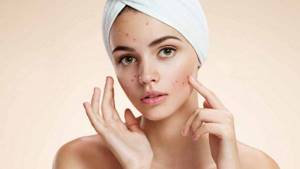
Medicines
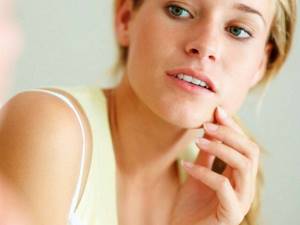
The most common medications include effective oil-based ointments and creams, single-component or multi-component solutions and sprays, cleansing patches and tonic compositions with active and mildly active ingredients.
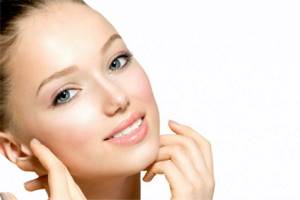
Types of acne
Acne of many varieties appears on the legs, depending on the reasons that caused the rash: red and flaky spots, watery blisters, blisters, sores. The most common types of rashes you encounter are:
Subcutaneous acne
Subcutaneous pimples resemble small bumps formed from highly compacted tissue. When inflamed, they become painful. They may be a sign of various hereditary pathologies.
White pimples
Pimples that are white and hard to the touch are usually the result of a malfunction of the sebaceous glands. As a result, secretions secreted by the glands begin to accumulate under the outer layer of skin, and a pimple with a characteristic white head appears.
Red pimples
If red bumps appear on your legs and itch, this may be a sign of an allergic reaction. Also, red pimples often occur due to ingrown hairs, microscopic cuts when shaving, and poor hygiene. Bright, bluish-tinged rashes with signs of suppuration can form against the background of a sharp decrease in immunity during illness.
Dry acne
Small pimples, flaky and quite hard to the touch, often form in the thigh area.
Watery pimples
Water pimples on the legs in some cases appear during the development of a cold or as a reaction to a violation of the normal temperature regime. However, often such rashes are a symptom of more serious pathologies. Watery small pimples on the legs are characteristic of the onset of chickenpox and a number of infectious skin diseases.
Types of acne and pimples on the face
Depending on the severity, there are several degrees of damage:
- The easiest or the first. At this stage, acne appears only on the forehead, chin or nose. The rashes are sporadic in nature, and are characterized by redness, as well as the appearance of a small number of papules, that is, red pimples.
- The rash spreads to the back, neck, as well as shoulders and chest. Moreover, they also have a single character, often found together with papules and pustules. That is, white spots and canals filled with pus.
- A huge number of papules and pustules appear on the face mixed with red areas of inflammation.
- The appearance of a confluence of several papules and pustules. This results in red, hard areas that may have a bluish tint. As the wounds heal, serious, large scars appear. This can be seen later by the terrible condition of the skin, which seems to be pierced and all covered with grooves and dents.
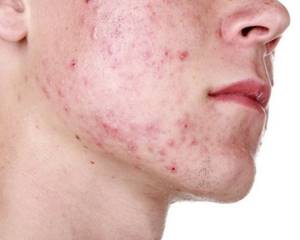
It is worth understanding that any pimple begins with comedones. That is, from ordinary blackheads, which are blockages of pores and hair follicles. This is a sebaceous plug, which, due to interaction with air, becomes covered with dark contents. So these dots appear black. Although in fact this is not dirt, but products of oxidation of sebum with air.
If this content is not removed from the spores in time, then pathogenic microorganisms can multiply inside the follicle and pore, and cause the occurrence of serious inflammation, as well as purulent formations. They are what constitute acne. With extensive lesions, several pimples merge into one, forming entire nodules with a bluish tint. They are the most dangerous because they cause a huge number of scars on the skin.
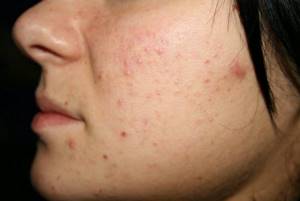
Rashes
What kind of “beast” jumped out?
If you find a large and hard subcutaneous pimple on your leg, like a lump, then with a 99% probability you have become the happy owner of a boil. People often call it “boil” or “boil”.
Such acne appears for many reasons, but among them there are several main and most common ones:
- Hormonal imbalance is perhaps the most pressing problem. Sometimes we don’t even realize what kind of hormonal “chaos” is happening in our body in the modern rhythm of life. Stress, lack of sleep, emotions, anxiety, fatigue - all this causes changes in our hormonal levels. Now let’s think about how many of these “shifts” our body performs during at least one working week? Yes, we hope that among our readers there are many such lucky ones who can boast of a calm, measured rhythm of life without any stress. But, alas, the life of most of us, as statistics show, is one big alarm in our heads.
- Decreased immunity - a weakened body instantly responds to any damaging factor. And he doesn’t answer in the most pleasant way for us.
- Tissue damage - if there was previously a scratch or abrasion at the site where the boil formed, then there is a high probability of infection getting there.
- Poor hygiene and insufficient skin care - skin diseases are often the result of insufficient body care.
- Poor nutrition - surprisingly, it is also one of the most common causes. Too much fatty food, lack of vitamins and minerals - all this leads to a malfunction of the body and entails big problems. Unfortunately, the problem of illiterate and irrational nutrition is very relevant in our time, often due to a lack of time and necessary information, as well as the poor quality of products on the shelves.
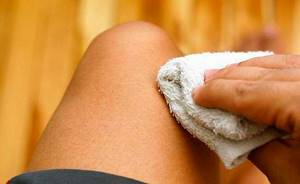
Types of acne pills
There are different types and types of drugs that have their own more or less narrow focus. People often doubt the effectiveness of acne pills, but often this happens only because they are little familiar with this area of treatment.
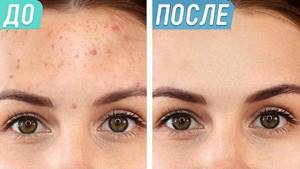
Self-medication often leads to negative consequences, and in the case of treating acne with pills, the wrong choice of medication may not have an effect, or worse, worsen the already problematic condition of the body.
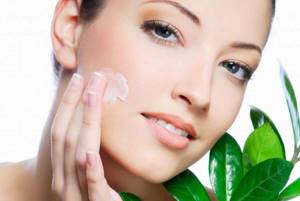
For proper treatment, first of all, you need to determine the source of the problem, and only then begin to act. People forget that most often, acne acts as a symptom, but not the disease itself. Often, along with the pills, doctors prescribe a certain diet, or an additional personal hygiene product, such as cream or soap.
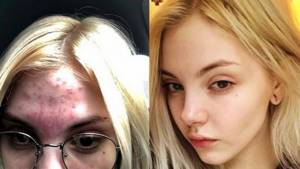
Do acne pills really help? Depends on the skill of choice. You can use antibiotics, simple vitamins, hormonal drugs, retinoids and even beer dodges. Next we will talk a little more about the main types of tablets.
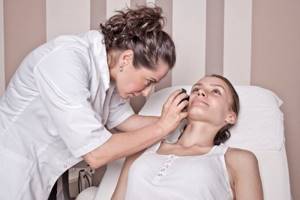
Allergic rash on legs
The location of the appearance of the rash depends on the disease that caused it. Only a doctor can make a diagnosis based on the nature of the rash. If the rash is itchy and flaky, then the cause may be an allergy. For comparison, you can see a photo of a rash on the legs with the name of the disease. With allergies, the rashes are pinkish-red, uneven and raised.
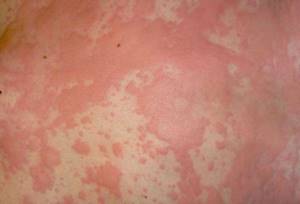
Such an allergy can be to anything, from foods consumed to external environmental factors. For diagnostics:
- carry out tests on the patient's skin;
- do a complete blood test;
- study other symptoms (runny nose, lacrimation).
An allergic rash is treated primarily by eliminating the allergen. If it is a food product, then do not eat it; if it is clothing, then they need to be changed to natural and softer ones. The doctor prescribes a complex of drugs and ointments.
Also read more about cold allergies
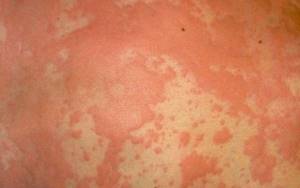
It is often confused with chickenpox or urticaria. It can lead not only to itching, redness and swelling, but also provoke loss of consciousness and, in severe cases, death.
Masks for treating acne and pimples on the face at home
Quite often, not only medications, but also masks are used to treat acne on the face. They are mainly aimed at removing the contents of the pores and cleaning them. At the same time, homemade masks often contain antibacterial drugs that prevent the proliferation of pathogens. Film masks are mainly used to cleanse the face and remove acne.
The action is due to the fact that the top layer of the mask sticks to the surface of the pores; after the mixture dries along with the mask, the dirt comes off the skin. Quite often, film masks based on honey, gelatin, and egg whites are used. To carry out the manipulation of preparing acne masks, you will need a medicinal decoction, medicinal herbs and oils, as well as products that everyone has in the refrigerator.
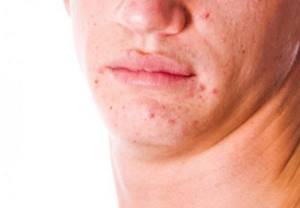
Acne on the chin
Recipes for masks for acne on the face:
Egg mask. In this case, not the yolk, but the white will be used. This is because the yolk is usually used to nourish the skin, and the white is used to cleanse. It is necessary to separate the white from the yolk, add a pinch of salt and beat until a fluffy foam is obtained. After this, five drops of lemon juice are added to the resulting composition and mixed thoroughly again. The mixture is applied to steamed skin for about 10 minutes. After this, the skin is thoroughly cleaned using warm and then cold water.
You can also get rid of acne with honey. To do this, mix 30 ml of bee nectar with one tablespoon of onion juice. The resulting mass must be soaked into gauze and applied to problem areas. Leave a similar application on the skin for a quarter of an hour. After this, everything is washed off with warm water.
Mask with aloe and green tea. To prepare this healing remedy you will need two aloe leaves. It is best if you first keep them for 2 days on a shelf in the refrigerator. After this, the skin is removed and the mass turns into a homogeneous jelly. Next, add three drops of tea tree essential oil to this mixture. After this, a small piece of brown bread crumb is added. After this, everything is ground to a paste and applied to the skin. It is necessary to maintain the application for a third of an hour. After this, everything is washed off with cold water.
White clay mask. Kaolin is known to everyone for its miraculous properties. It was used back in Roman times. To carry out the manipulation you will need one tablespoon of kaolin. A small amount of warm milk is added to it, as well as the pulp of one cucumber. The resulting mass is applied to the prepared skin and held for 15 minutes.
Regular baking soda works very well against inflammation and acne. It must be mixed in equal quantities with salt. It is best to take a finely ground Extra product. Next, you need to add foam from baby soap into the resulting mass. To do this, you need to moisten a piece of soap with water and rub with a sponge. The resulting foam is squeezed into a mixture of salt and soda. Next, apply the paste to clean, dry skin for 3-5 minutes.
Please note that the product may burn. To avoid severe burns, do not over-expose the mixture.
Before rinsing it off with warm water, rub it with slight pressure. Thus, the mask acts not only as a cleanser, but also as a way to get rid of dead cells. That is, as a scrub.
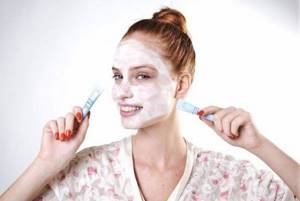
Acne masks
Acne on the face can be cured using folk remedies, masks, and pharmaceutical drugs. To get rid of skin inflammation as quickly as possible, be sure to follow the advice of dermatologists.
Acne on the thighs: causes in men
Rashes on the body bother both women and men.
The appearance of acne on the legs of men is often caused by the following factors:
- Wearing tight clothes. Tight trousers, especially those made of synthetic materials, cause irritation and impede air circulation.
- Increased sweating. Men have coarser hair on their thighs than women. With hypersecretion of the sweat glands, the skin is irritated, the hair injures it, causing inflammation.
- Contact with dirty equipment. During training, a person sweats a lot, the pores open up and quickly become clogged with dirt. Before class, you need to wipe the parts in contact with the skin.
- Abuse of anabolic steroids. Excessive levels of testosterone in the body have a number of side effects, one of which is rashes on the thighs.
- Allergy. An immunopathological reaction can be caused by washing powders, hygiene products, foods, etc.
- Stress changes the body's hormonal status, which weakens defense mechanisms.
Methods of treatment from a collection of folk recipes
Alternative medicine has absorbed a rich stock of recipes for all occasions, including such troubles as rashes on the surface of the frontal part of the face in women. The most effective and popular of them are given below.
Aloe
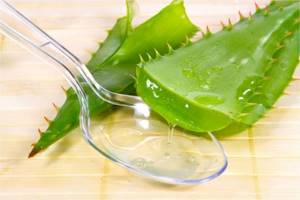
The effective antibacterial properties of aloe have long been used to treat various dermatological pathologies. The method of using agave for medicinal purposes is very simple: a clean leaf of the plant is stored in the refrigerator for a week, after which the juice is squeezed out of it, which is used to lubricate areas of inflammation. You can treat the skin several times a day, since the product is completely harmless and it is impossible to overdose.
Lemon
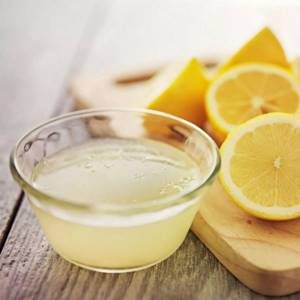
To reduce oily skin, narrow pores and dry out existing inflammations, wipe the face with lemon juice mixed with water in equal parts. It is better to carry out the procedure no more than once a day in the morning or evening to avoid dry skin.
Chamomile
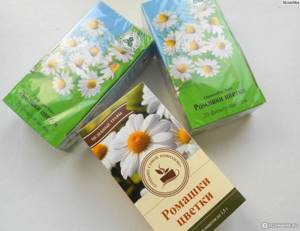
Chamomile flowers and dry sage herb in equal proportions are brewed with boiling water, infused until completely cool, filtered and used for compresses or wiping problem areas of the skin on the forehead. The grass can be replaced with linden blossom; in any case, the composition will have an anti-inflammatory effect and a gentle way to treat the inflammatory process.
Birch buds
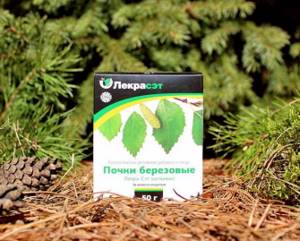
The following medicine is made on the basis of an environmentally friendly and affordable product, which are birch buds: 50 grams of birch buds are infused in a quarter glass of vodka for 24 hours, after which they are mixed with the same volume of boiled water and 15 milliliters of hydrogen peroxide from the pharmacy. The resulting composition is used to wipe the areas of inflammation two to three times a day.
Oatmeal
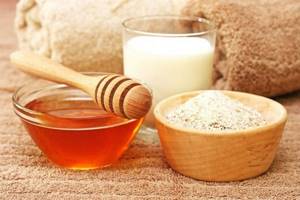
Two tablespoons of oatmeal or ground oatmeal powder are mixed with a teaspoon of liquid bee honey, applied to the acne affected areas for fifteen minutes and washed off generously with clean water. Regular use of such an application every three days soothes the dermis, relieves irritation and prevents the appearance of new foci of inflammation.
Tea tree oil
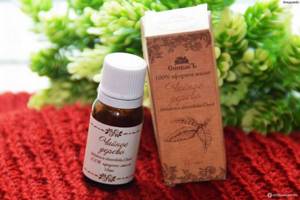
Tea tree oil effectively relieves inflammation and has an antibacterial effect, which should be used with caution. It is advisable to apply it in smears to areas of inflammation to dry and disinfect them.
For oily skin, three times a day is acceptable; for normal and combination skin, once or twice a day is enough to quickly get rid of inflammation.
Blue clay
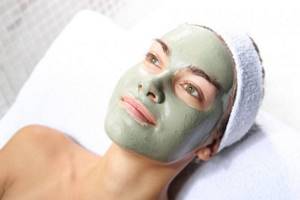
Deep penetration into the skin and an excellent cleansing and drying effect is achieved by using blue clay. A large spoonful of powder is diluted with water or a decoction of medicinal herbs to form a cream. You can supplement the composition with lemon juice, tincture of calendula flowers or essential oil, reducing the amount of water accordingly. This application is maintained for a quarter of an hour, then washed off generously with warm water. For dry skin, it is recommended to irrigate the face with mineral water in order to prevent the clay mask from drying out on the face and dehydration of the dermis.
The use of folk remedies is not only an effective way to solve dermatological problems, but also safe for the skin. The use of natural ingredients does not require mandatory consultation with a dermatologist. Regular and systematic anti-inflammatory treatments for the skin on the forehead can give lasting positive results. If home remedies do not have the desired effect, and the problem of rashes does not disappear for a long time, it is necessary to attend to a comprehensive medical examination.
What you can do: recipes for masks and lotions
You can get rid of acne using lotion, which is prepared according to the following recipe:
- you need to pour 2 tablespoons of mint and leave it for 15 minutes;
- the liquid should be filtered and added to it 20 ml of boric alcohol, the same amount of calendula tincture and 10 ml of lemon juice;
- The lotion should be wiped morning and evening only on problem areas of the facial skin.
Birch buds and leaves
To treat acne, you can use lotions and compresses from a decoction of birch buds. It is necessary to pour a tablespoon of raw material into 200 ml of boiling water and keep on fire for 15-20 minutes. The product should be cooled to room temperature and strained.
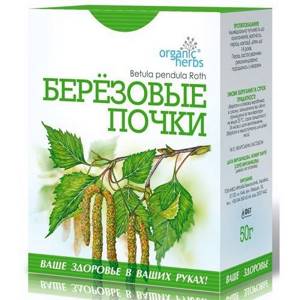
Raspberry leaves and flowers
You can make a cream or face wash from raspberry leaves. To do this, the leaves of the plant should be scalded with boiling water, then squeeze the juice out of them and mix with butter. This product is recommended to be applied to inflamed skin before bed and left overnight.
Toothpaste
You can get rid of acne on your face at home using toothpaste. Before the procedure, you should wash your face well and dry it gently with a soft towel. After this, apply the paste to the pimples and leave it for several hours or overnight.
If an allergy or discomfort occurs, the product should be washed off immediately with water. With the help of toothpaste, it is possible not only to dry out skin rashes, but also to stop the inflammatory process.
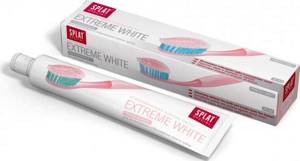
Herb tea
For problem skin, dermatologists recommend drinking up to 8 cups of green tea per day. In addition, various infusions, compresses and masks can be prepared on its basis.
Elecampane
To combat acne at home, you can prepare a decoction of elecampane according to the following recipe:
- you need to pour a tablespoon of elecampane into a container and pour a glass of boiling water;
- the resulting mixture must be left to infuse;
- The tampon must be moistened in a decoction of elecampane and applied to the inflamed areas of the skin;
- This procedure should be carried out once a day and after completion, lubricate the skin with moisturizer.
Do not be alarmed if the epidermis begins to peel off, because after a few days this effect will disappear.
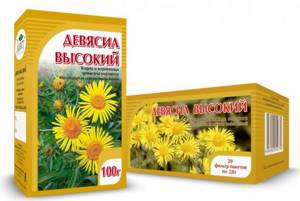
Chamomile flowers
Chamomile has a lot of unique properties and helps to quickly deal with acne. You need to pour 200 ml of boiling water over a tablespoon of the plant and boil for 5 minutes. The resulting mass must be left for 30 minutes, then strain and wipe the skin with it twice a day.
Parsley
Parsley has a good effect in the fight against acne. It is necessary to thoroughly grind the plant or pass it through a meat grinder.
Nuts and wheat
Nuts and wheat are distinguished by their unique composition, which contains large amounts of selenium and various acids. Experts recommend not only including them in the diet, but also making masks based on them.
The resulting mixture should be thoroughly mixed and evenly distributed over the inflamed skin. After 20 minutes, the mask should be washed off with plain water.
Cosmetics and ointments
You can quickly get rid of acne at home using some special medications:
- Badyaga.
- Dimexide.
- Green clay.
- Curiosin.
- Sledocid.
You can use antibacterial and antimicrobial agents such as Baziron AS, Zerkalin, Ichthyol and erythromycin ointment.
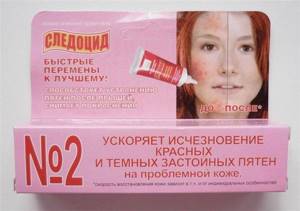
Traditional ointments for acne
Many people try to overcome skin diseases. And for good reason, because they cause a lot of discomfort. Folk recipes for acne ointments made from natural ingredients are often used. At the same time, current pharmaceuticals, relying on previous experience, can offer drugs, the production of which is based on recipes for traditional therapy.
Badyaga gel is made on the basis of a substance of animal origin. Ointment particles help to dilate blood vessels, thereby stimulating the skin surface. Thanks to this, the blood supply to the skin is restored, and the inflammatory effect goes away. A rush of blood to the areas of application is accompanied by slight hyperemia and a feeling of warmth.
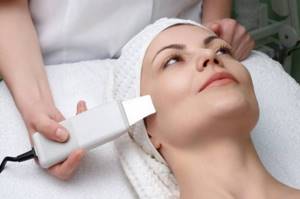
Tar ointment. This drug is considered natural, as it consists of birch tar. This natural substance has an antiseptic effect.
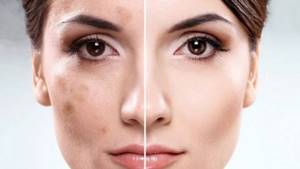
Turpentine ointment - created from purified turpentine oil obtained from the resin of spruce, fir and other coniferous trees. The ointment has analgesic properties, dilates blood vessels well and is quickly absorbed into the skin layer.
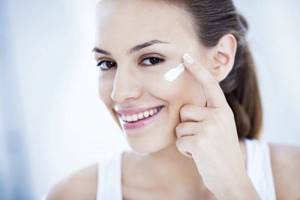
According to the instructions, this ointment is not used for acne. But traditional therapy recommends turpentine in case of furunculosis. In any case, before using this or that product, you should obtain the advice of a specialist.
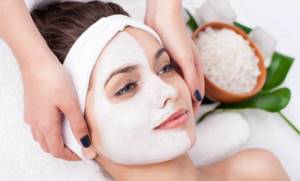
Thus, in addition to the popular products sold in pharmaceutical pharmacies, there are also regular ointments based on natural ingredients. They are considered safer because they contain natural elements.
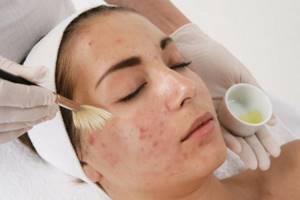
Keratosis of the skin
With keratosis, goose bumps exist constantly, regardless of the person’s emotional state. Keratosis can appear at any age, but is most often seen in teenagers and is associated with the accumulation of keratin (a protein that is the main component of the epidermis, hair and nails) in the hair follicles.
We also recommend reading: Modern methods of treating uterine fibroids Causes, symptoms, treatment and consequences of measles in children Infection with roundworms: symptoms and treatment of ascariasis Symptoms of mononucleosis in children and treatment according to Komarovsky
Keratosis is characterized by small pimples on the shoulders, buttocks, and back, which have various shades of color, ranging from white to red. These pimples are often confused with pimples, but the latter contain a sebaceous substance rather than keratin, which accumulates in the follicles.
Characteristics and treatment of cervical dysplasia of the 1st degree
Keratosis is a fairly common disease throughout the world. According to general estimates, every third inhabitant of the earth suffers from it to one degree or another. However, it most often appears in the following groups of people:
- children and adolescents;
- women;
- people suffering from skin diseases such as eczema.
In children, keratosis usually appears in infancy and worsens during adolescence and puberty. After this period, its symptoms may partially or completely disappear, so it is very rare in adults.
The main cause of goose bumps in a child or adult is a genetic factor. It usually occurs in people with dry skin or those who suffer from atopic dermatitis.
Hemorrhagic vasculitis
Hemorrhagic vasculitis is a disease of the vascular wall with a complex of symptoms. It manifests itself as hemorrhages on the skin, the appearance of papules and purulent nodes, accompanied by swelling, kidney damage and abdominal syndrome.
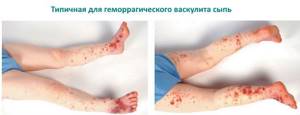
Most often, hemorrhagic rash is localized on the lower extremities. It appears regardless of age, although children under 3 years of age are very rarely affected by it.
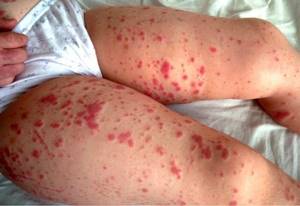
Causes:
- Infectious diseases;
- viruses (herpes, influenza, ARVI);
- bacteria (streptococci, tuberculous mycobacteria, mycoplasma);
- parasites (worms, Trichomonas);
- pathogens of foodborne diseases.
- Allergic reaction to medications and vaccines;
- Hypothermia.
Many doctors emphasize that these factors can affect the occurrence of hemorrhagic spots if there is a genetic predisposition to this pathology.
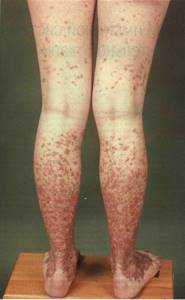
Read more about hemorrhagic vasculitis for deeper knowledge on this topic.
Symptoms of Henoch-Schönlein disease:
- cutaneous. Characterized by the appearance of hemorrhagic spots, which are often located symmetrically on the skin of the legs, thighs and buttocks;
- More than half of the patients have articular syndrome. Mild arthralgia is observed for a short time or for several days. There is pain syndrome. Redness, swelling, limitation of joint movements;
- abdominal syndrome is manifested by paroxysmal abdominal pain, stool disturbances, nausea and vomiting;
- renal syndrome is observed in a third of patients and can develop renal failure.
How to find the ideal “helper” for the fight?
You can find products that care for problem skin in a specialty store or pharmacy. In particular, creams with hydroacids (for example, salicylic or malic) have the desired effect. At the same time, it is worth buying a multivitamin complex for oral administration (it should contain vitamins “A”, “C” and “B”).
For follicular hyperkeratosis, glucocorticosteroids are indicated, but it is strictly forbidden to prescribe such drugs yourself - only a doctor can do this. But it is necessary to adjust your diet: remove alcohol and fast food, increase the share of fresh fruits and vegetable dishes in your diet. If there are no health contraindications, you should visit the solarium or sauna more often (the use of scrubs is especially effective after deep steaming).
You can resort to salon procedures offered by specialized cosmetology centers - chemical peeling, thalassotherapy and a vacuum massage course. The procedures, if they do not completely remove the problem, will noticeably improve the condition of the skin. As an alternative to expensive professional services, it makes sense to choose home treatments - they help a lot if you deal with “bumps” on a regular basis.
